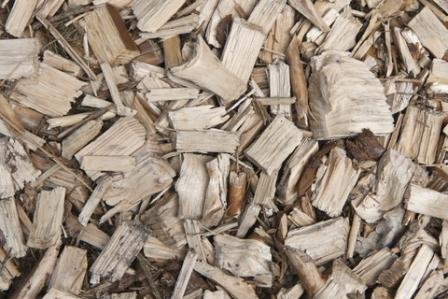Burning Wood Chips?
Wood chips would be an incredibly appealing biomass fuel if the practical problems could be overcome. Woodchips are made by passing waste timber through a chipper. This breaks it down into small pieces which are easier to transport than the original timber. They are in daily use by tree surgeons and landscape gardeners who often give it away for free to save the cost of disposal.
As a fuel wood chips face a few substantial problems:
- Chips are supplied 'green' with a high moisture content - drying stacked chips is nearly impossible (it turns to compost instead) so chips must be burnt wet
- The size of chips varies hugely depending on the machine doing the chipping and the type of timber fed to it
- Unlike wood pellets with their regular size chips are very hard to feed automatically because larger pieces block the flow
- On the plus side it is possible to get large quantities either cheaply of for free, so a biomass furnace that can burn chipped waste wood would be very cheap to run.
Commercial Chip Burning Furnaces
There is very little information available about existing 'off-the-shelf' biomass boilers capable of burning woodchips in a domestic setting. The few models I have seen are large scale boilers for institutional heating which are far too large for normal homes.
A few sites document experiments in DIY chipped wood furnaces, however the best of these eventually concluded that it was impractical to run and difficult to commercialise.
There may be scope for an enthusiastic tinkerer to develop their own - I'd love to hear if anyone has had success with making their own furnace, or found a good commercial home furnace.
Typically these furnaces use an auger type feed to introduce the chips to the combustion chamber. The uneven chip sizes necessitate large and very sturdy machinery to prevent blockages and jams of chips, and the damp fuel requires both high temperatures and plenty of air supply, usually provided by a fan.
On the large scale these systems can be very effective burning tonnes of waste wood chip and other woody matter per day and are capable of heating large districts of domestic houses. This type of arrangement is relatively common in the Austrian where wood is harvested from the forests and there is already a long tradition of wood burning.

